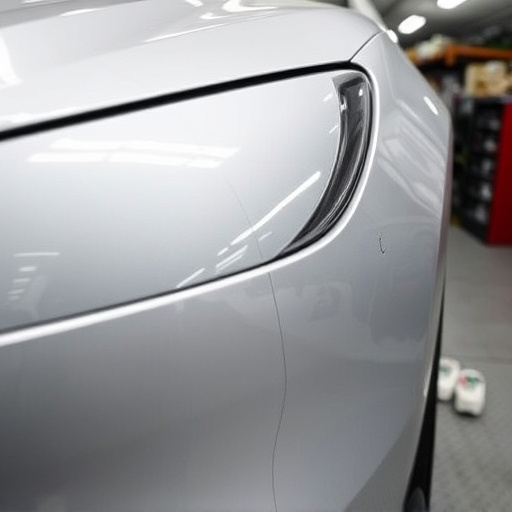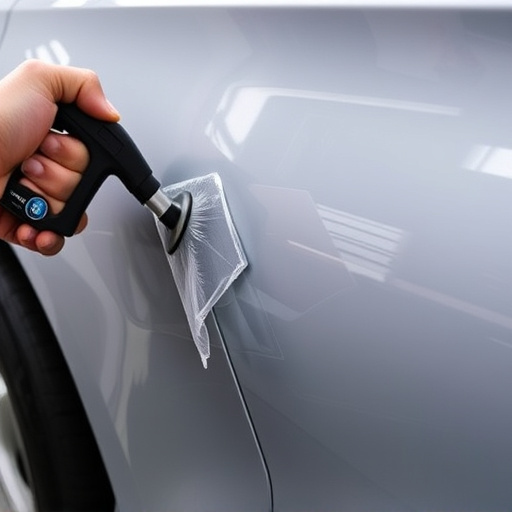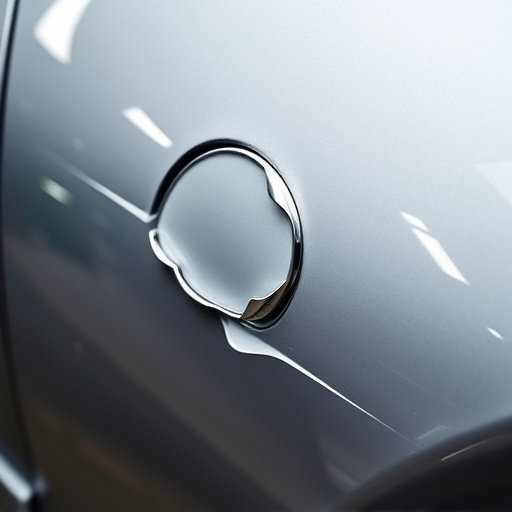Composite material replacement methods gain popularity as eco-friendly alternatives to traditional manufacturing, aiming to reduce reliance on non-renewable resources. Industries like automotive, aerospace, and construction can decrease their carbon footprint by adopting these innovations, particularly in vehicle paint repair and car dent removal using bio-based materials and natural fibers. Environmental benefits include lower petroleum dependence and reduced carbon emissions, with renewable resources like bamboo and recycled plastics easing strain on finite fossil fuels. These methods promote waste reduction, durability, and recyclability, aligning with circular economy principles. Future prospects look promising for cost-effective composite advancements in both new vehicle manufacturing and collision repair processes, contributing to a greener automotive landscape.
In an era driven by sustainability, exploring eco-friendly alternatives to composite materials is paramount. This article delves into the innovative methods replacing traditional composites, focusing on environmental stewardship. We’ll examine how these new approaches mitigate ecological impact while maintaining performance. From understanding the replacement processes to their profound environmental benefits and future implementation prospects, this exploration highlights the path forward for a greener tomorrow. Discover the potential of composite material replacement in fostering sustainability.
- Understanding Composite Material Replacement Methods
- Environmental Benefits of Eco-Friendly Alternatives
- Implementation and Future Prospects for Sustainability
Understanding Composite Material Replacement Methods

Composite material replacement methods are gaining traction as an eco-friendly alternative to traditional manufacturing practices. These innovative techniques involve using sustainable materials and processes to replace conventional composite structures, which often rely on non-renewable resources and contribute to environmental degradation. By embracing these replacements, industries such as automotive, aerospace, and construction can significantly reduce their carbon footprint.
One prominent application of composite material replacement is in vehicle paint repair and car dent removal processes. Traditional methods employ toxic chemicals and energy-intensive techniques, whereas newer approaches utilize bio-based resins, natural fibers, and water-based coatings. These eco-conscious alternatives not only minimize environmental impact but also contribute to the overall sustainability of vehicle restoration and maintenance practices.
Environmental Benefits of Eco-Friendly Alternatives

The shift towards eco-friendly alternatives for composite material replacement offers significant environmental benefits. Traditional composite materials often rely on petroleum-based components, contributing to the global demand for non-renewable resources and exacerbating carbon emissions. By embracing greener options, we can reduce our ecological footprint. These eco-friendly substitutes typically incorporate renewable resources such as bamboo, hemp, or recycled plastics, thereby minimizing the strain on finite fossil fuels.
Moreover, the use of composite material replacement methods that are environmentally conscious promotes circular economy principles. Techniques like frame straightening and car scratch repair, often utilizing these new materials, contribute to waste reduction by repurposing and refurbishing existing components. Unlike conventional manufacturing practices, eco-friendly approaches focus on durability and recyclability, ensuring that products have a longer lifespan before being recycled or reused, as seen in many car repair services.
Implementation and Future Prospects for Sustainability

The implementation of composite material replacement methods offers a promising avenue for enhancing sustainability in various industries, particularly automotive manufacturing and collision repair centers. These innovative techniques are revolutionizing the way we approach car bodywork services by reducing environmental impact. Traditional metal fabrication and disposal practices have long been a concern, prompting a shift towards eco-friendly alternatives. Composite materials, known for their strength and lightweight properties, can significantly cut down on resource consumption and waste generation.
Looking ahead, the future prospects for sustainability in composite material replacement are bright. As research progresses, we can expect to see further advancements in developing more sustainable composites, ensuring they remain cost-effective and efficient. This evolution will likely lead to wider adoption in both new vehicle manufacturing and collision damage repair processes. With an increasing focus on green technologies, car bodywork services that embrace these composite solutions contribute to a greener and more sustainable automotive landscape, ultimately reducing the environmental footprint of the industry as a whole.
Composite material replacement methods offer a promising path towards a greener future by mitigating environmental impact. These eco-friendly alternatives not only reduce waste but also minimize the carbon footprint associated with traditional composites. As we look ahead, adopting these sustainable practices across industries can drive significant positive changes, ensuring a more environmentally conscious world while meeting the demand for durable and versatile materials. By understanding and implementing composite material replacement, we take a crucial step towards a more sustainable tomorrow.














